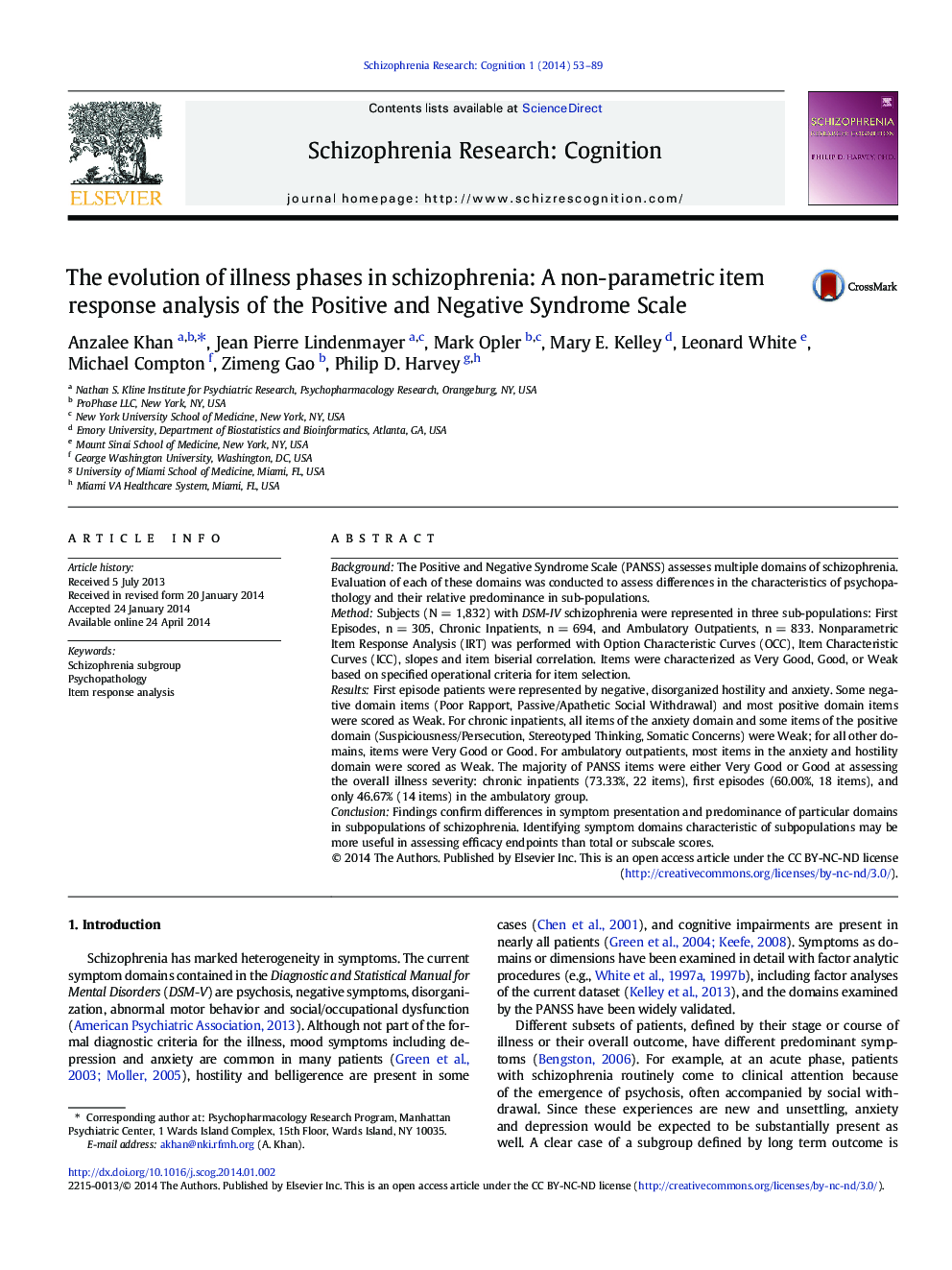| Article ID | Journal | Published Year | Pages | File Type |
|---|---|---|---|---|
| 4191769 | Schizophrenia Research: Cognition | 2014 | 37 Pages |
BackgroundThe Positive and Negative Syndrome Scale (PANSS) assesses multiple domains of schizophrenia. Evaluation of each of these domains was conducted to assess differences in the characteristics of psychopathology and their relative predominance in sub-populations.MethodSubjects (N = 1,832) with DSM-IV schizophrenia were represented in three sub-populations: First Episodes, n = 305, Chronic Inpatients, n = 694, and Ambulatory Outpatients, n = 833. Nonparametric Item Response Analysis (IRT) was performed with Option Characteristic Curves (OCC), Item Characteristic Curves (ICC), slopes and item biserial correlation. Items were characterized as Very Good, Good, or Weak based on specified operational criteria for item selection.ResultsFirst episode patients were represented by negative, disorganized hostility and anxiety. Some negative domain items (Poor Rapport, Passive/Apathetic Social Withdrawal) and most positive domain items were scored as Weak. For chronic inpatients, all items of the anxiety domain and some items of the positive domain (Suspiciousness/Persecution, Stereotyped Thinking, Somatic Concerns) were Weak; for all other domains, items were Very Good or Good. For ambulatory outpatients, most items in the anxiety and hostility domain were scored as Weak. The majority of PANSS items were either Very Good or Good at assessing the overall illness severity: chronic inpatients (73.33%, 22 items), first episodes (60.00%, 18 items), and only 46.67% (14 items) in the ambulatory group.ConclusionFindings confirm differences in symptom presentation and predominance of particular domains in subpopulations of schizophrenia. Identifying symptom domains characteristic of subpopulations may be more useful in assessing efficacy endpoints than total or subscale scores.
